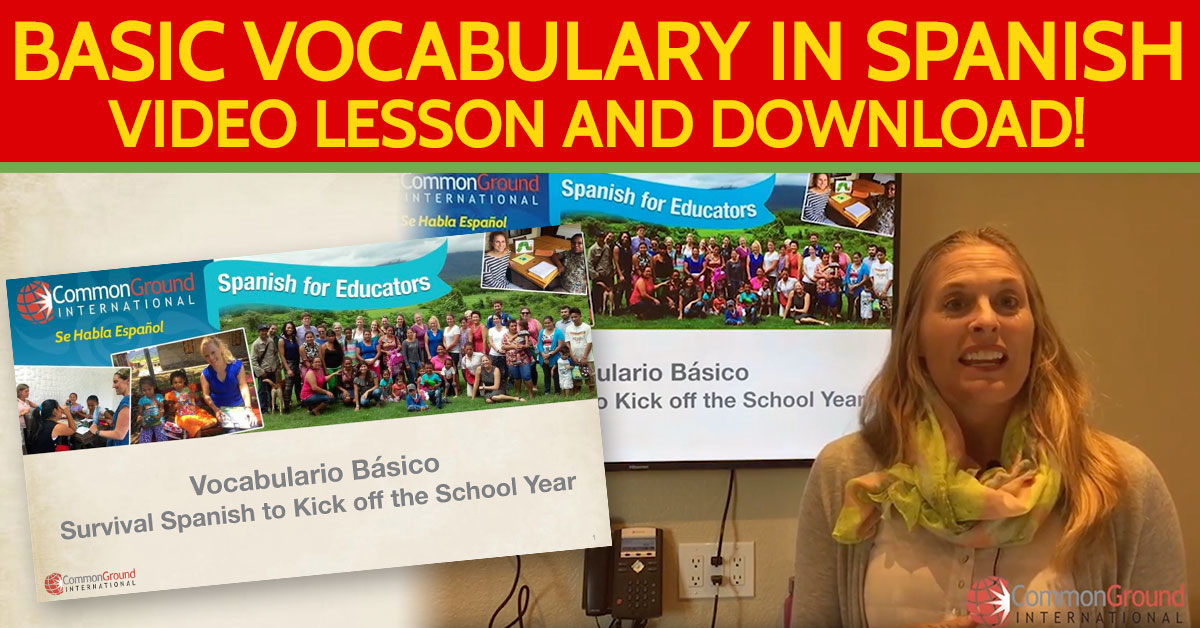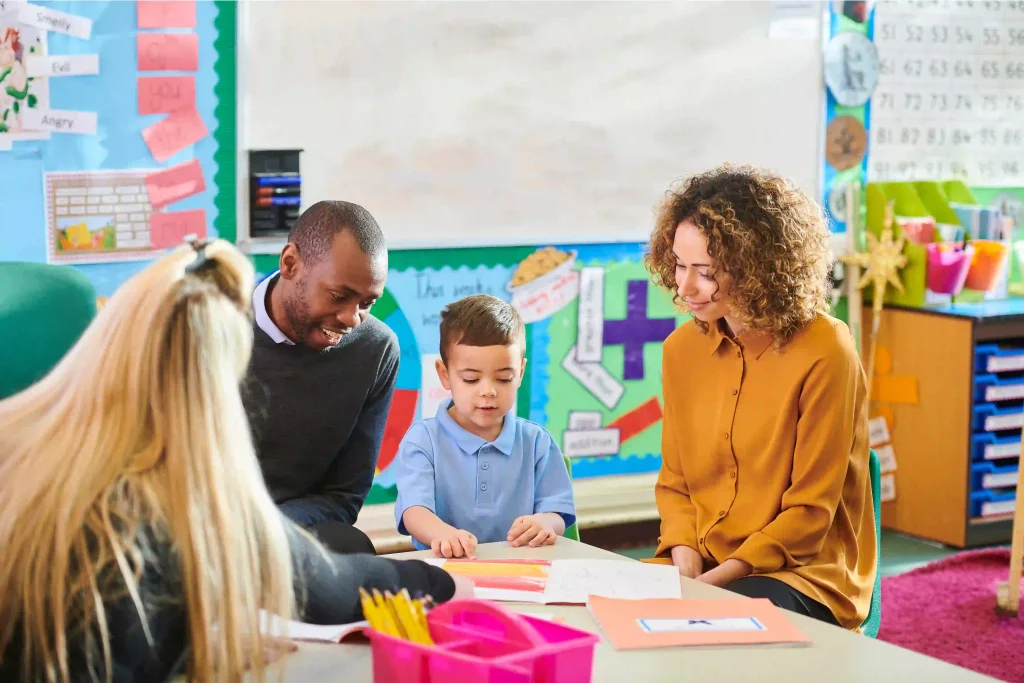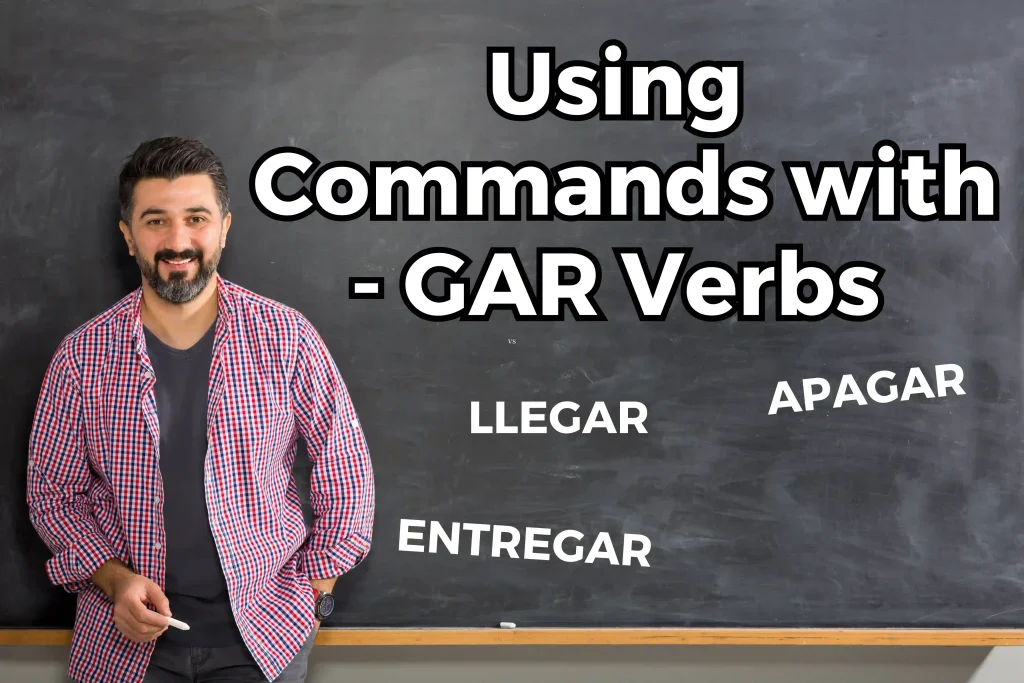This Spanish for Educators lesson focuses on learning basic vocabulary in Spanish to start having dialogues with your Latino students and/or parents & guardians.
Su reto profesional: start using these survival phrases in Spanish with your Latino students and/or parents & tutors during this new school year. ¡No tema empezar a hablar en español!
Here is the Spanish lesson all about Basic Vocabulary in Spanish to Kick off the School Year I taught to my Maestro Miércoles Facebook group:
Subscribe to our YouTube Channel to see all of our lessons and get the latest videos right away!
Objetivo de la lección / Objective of the Lesson
At the end of the lesson, you’ll be able to use basic Spanish phrases to greet and interact with students and parents & guardians.
Vocabulario clave / Key Vocabulary
This vocabulary allows you to talk about a few key people (personas), places (lugares), greetings (saludos), emotions (emociones, and expressions (expresiones).
Also, at the end of this lesson, you will be able communicate a basic dialogue in Spanish! 😀
Are you ready? ¡Vamos!
Personas / People
The Spanish language has gender. Words are either masculine and feminine and adjectives reflect the gender of the person or thing they are describing. Here are some key “personas” to learn right away, and you will notice they reflect the gender of the person. :
| English | Spanish | Examples |
| Classmates |
Los compañeros de clase / Las compañeras de clase |
A él, le gusta jugar con los compañeros de clase. |
|
Friends |
Los amigos / Las Amigas |
Ella tiene un amigo en una clase diferente. |
|
Principal |
El director / La Directora |
¿Dónde está la oficina de la directora? |
|
Son / Daugther |
El hijo / La hija |
Le presento a mi hijo. |
|
Students |
Los estudiantes / Las estudiantes |
Los estudiantes se portan bien |
| Teacher | El maestro / La maestra | Yo soy la maestra de ciencias |
Lugares / Places
Here are 5 important places to know right away in Spanish:
| English | Spanish | Examples |
|
Car line / Drop off |
La zona de dejar y recoger a los estudiantes |
2 maestros están colocados en la zona de dejar a los estudiantes. |
|
Class meeting |
Reunión de la clase |
Empezamos el día con una reunión de la clase. |
|
Classroom / Classrooms |
El aula, las aulas, el salón de clase |
Hay 20 escritorios en el aula. |
|
Office |
La oficina |
Si no se porta bien, el estudiante tiene que ir a la oficina. |
|
School |
La escuela |
Hay 2 escuelas primarias. |
Saludos / Greetings
Greetings are very important in Hispanic and/or Latino cultures! It’s a good idea to start off with a greeting when talking with Latino families.
| English | Spanish | Examples |
|
Greetings |
Los saludos |
Empezamos el día con los saludos. |
|
Good morning |
Buenos días |
Buenos días, soy la maestra Ms. Peterson |
|
Good afternoon |
Buenas tardes |
Buenas tardes, gracias por venir a la conferencia |
|
Good night |
Buenas noches |
Buenas noches, bienvenidos a la noche de regreso a la escuela |
|
Name |
Nombre |
¿Cuál es tu nombre? |
| Welcome |
Bienvenido/a |
¡Bienvenidos a nuestra clase! |
Emociones / Emotions
Emotions are important too, don’t you think? 🙂 3 common emotions during the first weeks of school are:
| English | Spanish | Examples |
|
Anxious |
Ansioso/a |
Estoy ansioso. |
|
Excited |
Emocionado/a |
Ella está emocionada. |
|
Nervous |
Nervioso/a |
Él está nervioso. |
Note: Excited is Emocionado(a), don’t use Excitado(a) because this is a False Friend and if you used it, your Latino students and/or parents will look at you this way o_O
Expresiones clave / Key Expressions
Learn these key expressions to start having a basic conversation in Spanish. An important point to remember…There are two ways to express “YOU” in Spanish Tú is informal or familiar, used when you are talking to your students. Usted is formal and it’s used when you are talking with the parents / guardians of your students until you establish a more informal / friendly relationship with them OR when they start using tú with you!
Question / Phrase |
Response |
|---|---|
| ¿Cómo te llamas? ¿Cómo se llama? ¿Cuál es tu nombre? |
Me llamo ______. Soy ______. |
| ¿Cómo estás? ¿Cómo está? | I am (feelings) |
| Mucho gusto | Igualmente |
| Hasta luego, hasta la vista, hasta el lunes |
Adiós, hasta luego |
Diálogo para practicar / A Dialogue To Practice
Watch the full dialogue in the video 😉
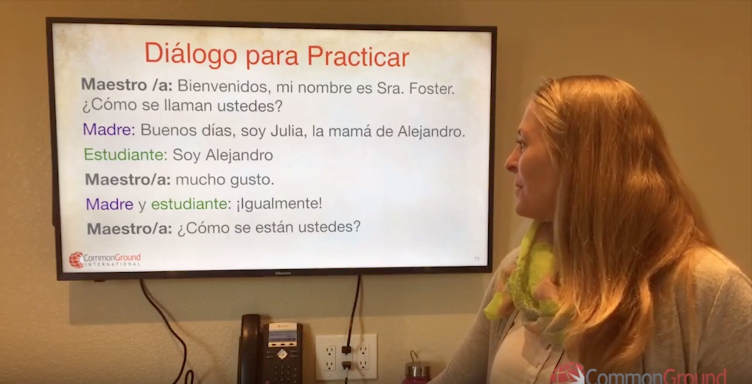
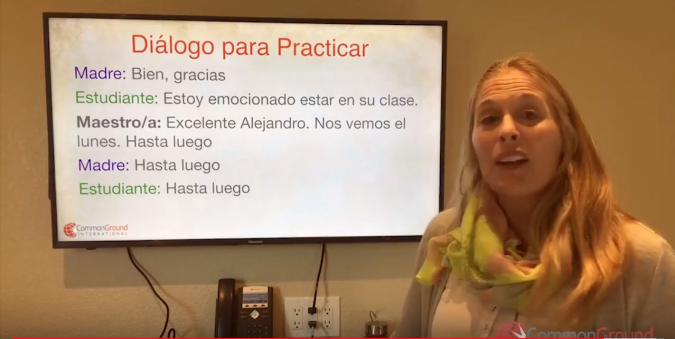
Now it’s your turn! ¡Te toca a ti!
Study all of this classroom vocabulary in Spanish with these flashcards!
Create a basic introduction dialogo to introduce yourself to your students/ parents. Include:
- Saludo—> Buenos días, buenas tardes, noches, etc.
- Nombres —> ¿Cómo se llama? ¿Cuál es su nombre?
- Nice to meet you —> Mucho gusto, igualmente, etc.
- How are you? —> ¿Cómo estás? ¿Cómo está?
- Despedida —> Hasta luego, hasta el lunes, etc.
Share it in the comments below or on our Facebook group to receive feedback from other teachers!

